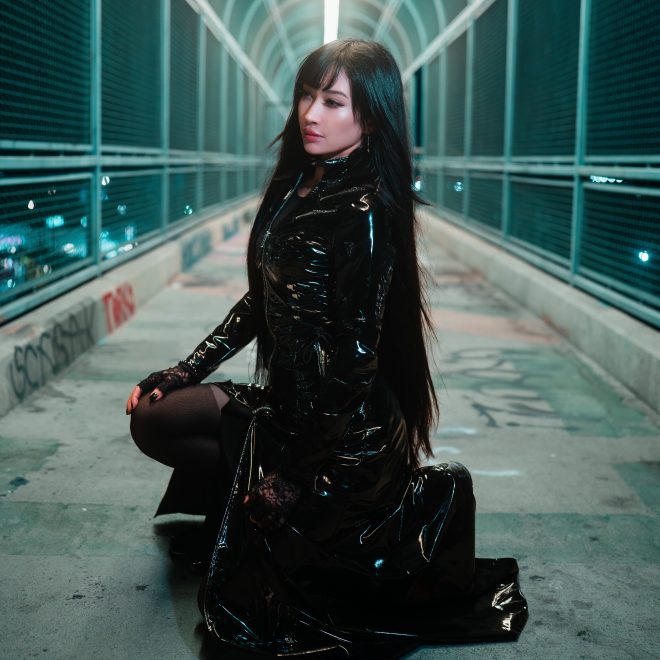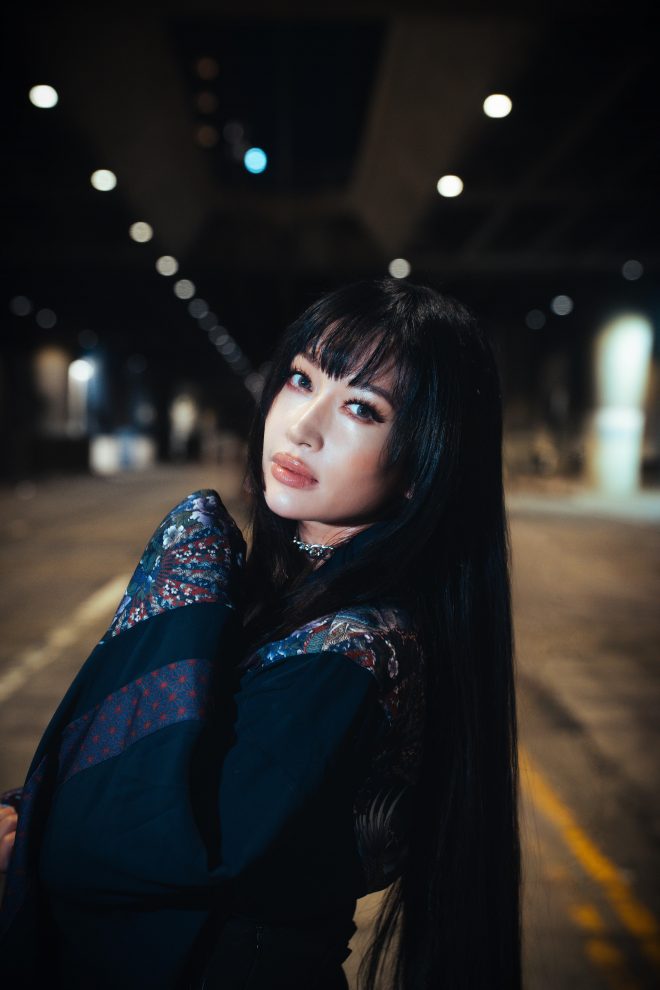Acid Futures: Marie Vaunt’s Techno Without Borders

Marie Vaunt doesn’t play it safe. Her tracks carry the bite of acid, the shadow of gothic melodies, and the punch of peak-time techno, all woven into something that feels cinematic rather than formulaic. In a world where trends burn fast and fade even faster, she has carved out her lane with persistence, precision, and a refusal to dilute her vision.
By 2025, she isn’t just another name on the Beatport charts; she’s the best-selling female techno artist and one of the top four overall. But behind the numbers lies an artist who still treats the 303 like a living instrument, who layers anime-inspired atmospheres under warehouse kicks, and who insists that honesty is the only compass worth following.
Her story isn’t about chasing virality, it’s about building something that lasts. And with her label Kurai Records, her acid-driven catalog, and her Japanese-American identity feeding into every detail, Marie Vaunt is proving that techno’s future belongs to those brave enough to make it personal.
Acid & Music Influence
Acid has always been more than a texture in Marie Vaunt’s sets; it’s her fingerprint. For her, the 303 is not just a machine, it’s a living organism that still breathes fire into the dancefloor decades after its birth.
“The 303 will always feel alive to me because it’s more than a sound; it’s a living, breathing instrument. Its imperfections and the way it responds to tiny tweaks make every sequence unique. To reinvent it, I like to push it through modern processing, layer unexpected textures, or let it play against haunting pads or hard-hitting drums. It’s about putting that familiar squelch in a world it hasn’t lived in before, so it feels reborn rather than nostalgic.”
This balance between the mechanical and the emotional defines her catalog. Yes, her tracks are built for peak-time energy, but they never stop at sheer impact. The roots of that duality can be traced back to the bands and movements that shaped her.
“I’m drawn to contrast. Drumcode’s peak-time energy gave me a blueprint for building massive rhythms, but artists like Depeche Mode, The Prodigy, and The Cure taught me that darkness and subtle emotion can hit even harder. Outside of techno, anime soundtracks and movie scores have influenced the way I layer atmosphere under a driving beat. It’s that tension, power, and vulnerability that keep my sound straightforward.”
Anime & Japanese Roots
For Marie Vaunt, anime was more than entertainment; it was an education in storytelling. The way Japanese animation flips between tenderness and brutality left an imprint on how she builds her own sonic worlds.
“Anime was my first introduction to storytelling that could be brutal one moment and heartbreakingly beautiful the next. Shows like Akame ga Kill or Attack on Titan taught me that emotional weight and aggression can coexist. In my tracks, the kick drums might be relentless, but there’s often a fragile melody, vocal, or texture buried inside, and that’s the anime influence.”
Her identity as a Japanese-American artist adds another dimension to that duality. It’s not just a cultural backdrop; it’s the fuel behind her discipline, her stage presence, and her vision of artistry without borders.
“Being Japanese-American means I’m always navigating two worlds. From Japan, I draw a sense of discipline, minimalism, and respect for tradition. From LA, I get the chaos, the experimentation, and the fearless energy of the underground. Even visually, my artwork, outfits, and stage presence are a mash-up of those influences. It keeps my creative perspective wide open.”
The result is an artist who can command a warehouse in Los Angeles with the same intensity she’d bring to a Tokyo stage; her sound is shaped by both worlds, but confined by neither.

Food & Culture
For Marie Vaunt, inspiration isn’t limited to studios and stages; it often starts in the kitchen. Food is another form of rhythm, a daily ritual that feeds her creative instincts just as much as it feeds her body.
“Food is a huge part of my creative ritual. Japanese cuisine, with its precision and balance, reminds me to respect the details in my mixes. LA’s food culture is wild and experimental, which inspires me to take risks. Cooking is like building a track, layering ingredients, balancing flavors, knowing when to keep it simple and when to go bold.”
It’s a philosophy that mirrors her music: precision balanced with chaos, structure laced with surprise. The same way a dish can shift with one spice, a track can transform with one new texture, and in her world, both cooking and producing are acts of composition.
Career & Vision
Marie Vaunt has broken records on Beatport and carved her name among the top four techno artists in the world. Yet her success has never diluted her vision. If anything, it sharpened her resolve to protect her voice from being swallowed by trends.
“Kurai Records exists so I can stay fearless. Success is amazing, but the moment you chase numbers instead of ideas, you lose what made people care in the first place. I remind myself why I started: to make dark, emotional, acid-driven techno that excites me first. The commercial side is a byproduct, not the goal.”
Her tracks, whether dropped in a sweaty underground basement or blasting from the mainstage towers of a global festival, are built to carry. She doesn’t chase the crowd; she trusts that emotion will always translate.
“I don’t change my process for festivals or underground clubs. I honestly believe that a track that’s made with care will translate anywhere. Maybe it’s a whisper in a warehouse or a roar on a big stage, but the emotion carries. I trust the universality of music and its ability to fit in without me forcing it.”
Looking forward, she isn’t interested in quick pivots or following hype cycles. Her vision is slower, deeper, and rooted in both her love of techno and her heritage.
“My focus is to keep pushing my techno and acid sound forward and to let it evolve naturally by iteration, as I don’t believe in following trends. I also want to keep growing Kurai Records into a reference label in the techno scene, while bringing my Japanese heritage further into the spotlight through the aesthetics, the emotion in the music, and the community around it. For me, it’s about building something timeless and evergreen rather than chasing what’s popular right now.”
Closing Reflections
Marie Vaunt’s story is proof that techno in 2025 doesn’t need to choose between raw power and emotional weight. She is building something that doesn’t just hit the body but also lingers in the heart, where acid lines twist into memories and melodies carve out space for vulnerability. What makes her path compelling isn’t just the milestones or the statistics, but the way she frames every release as a chapter of a larger narrative, one that refuses to compromise.
Her discipline comes from Japan, her fire from Los Angeles, her vision from years of listening closely to what both the crowd and her own instincts demand. What she carries forward with Kurai Records, her stage presence, and her sound is not just a career strategy but a philosophy: that authenticity is the only compass that matters.
“For me, it’s about building something timeless and evergreen rather than chasing what’s popular right now.”
And maybe that’s why Marie Vaunt feels like one of the artists shaping not only the present of techno but its future. She is not chasing the noise of the moment; she is designing echoes that will still be heard when the hype has passed.


